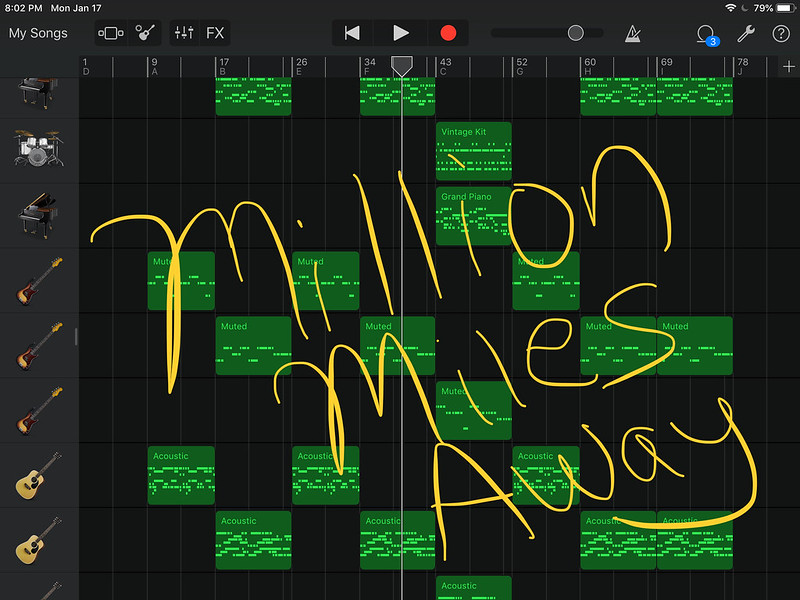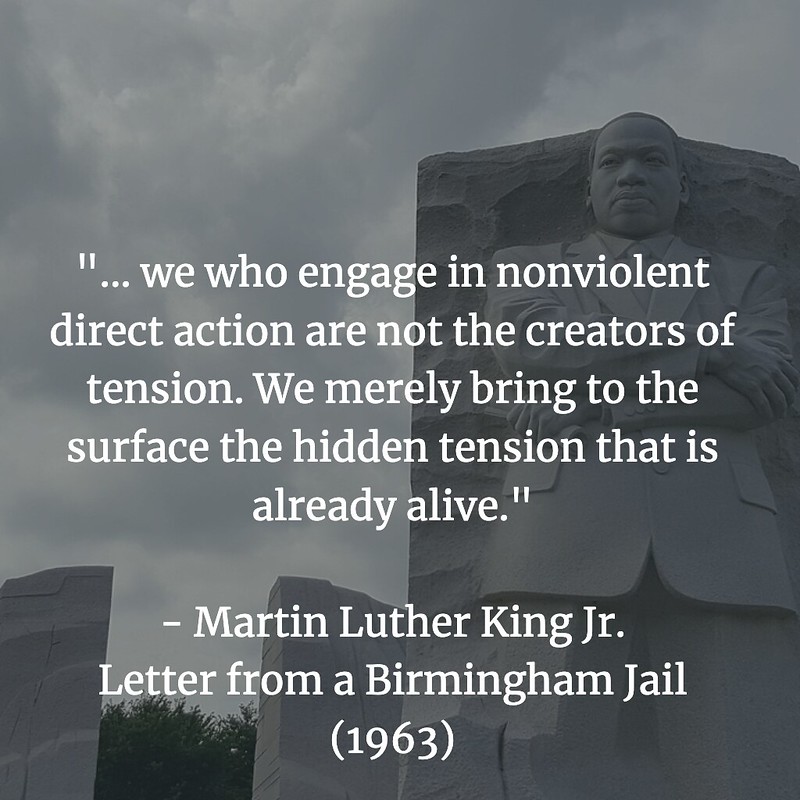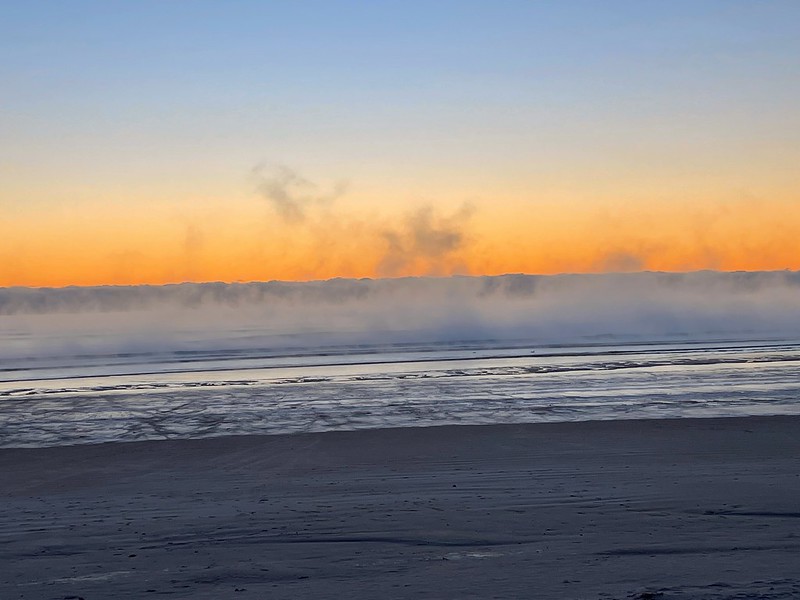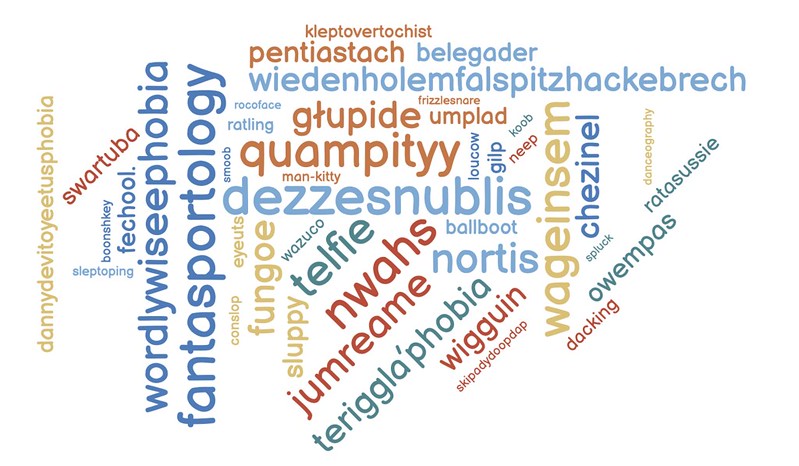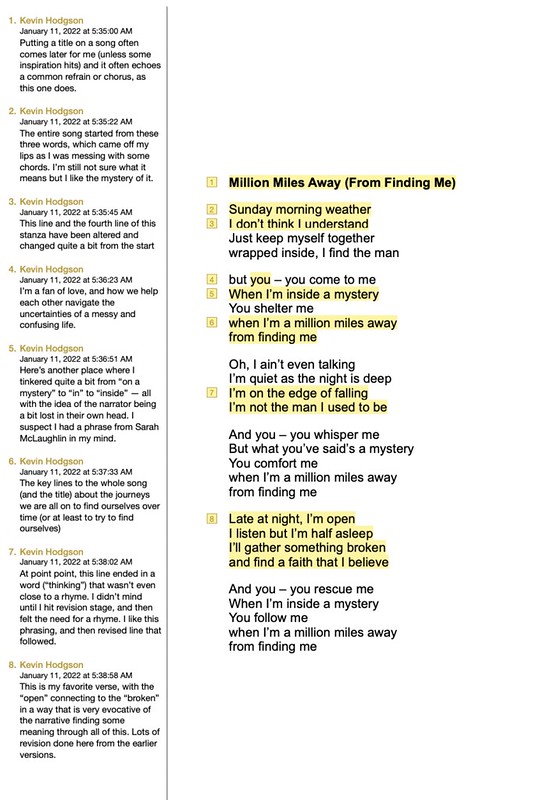![]() (This is the fifth of a series of posts about writing songs. Read the first post, second post, third post, and fourth post, if interested)
(This is the fifth of a series of posts about writing songs. Read the first post, second post, third post, and fourth post, if interested)
Note: After spending quite a bit of time working to produce tracks of music for this ons song that I am writing and reflecting on out in the open, I sort of still like the rawness of the early versions where it is just guitar and rough voice. I may yet abandon what emerged and described here in this post, but not yet. I’m going to continue my song quest forward.
In my earlier posts, I shared how I took an idea built of a chord pattern and opening line of a song, worked through drafts of lyrics, developed a verse and chorus, and began to construct a new song out here, in the open, as part of a creative reflective practice. (See the links above if you want to read and listen to what I had been up to from the start)
With the lyrics mostly together, and solidified, with only a line or two still being tweaked now and then as I practice the song — Million Miles Away (From Finding Me — I decided to try my hand at building and producing an instrumental backing music with technology. Initially, as almost always, I was on my acoustic guitar, with the chords and words and paper. In turning to Garageband, and Soundtrap, as digital music stations, I was hoping to turn the song at a slight angle, with layers of sound.
I began in Garageband, on the app on my iPad, and started with drum loops, and then added piano, and then bass and so on. I added, and removed, other instruments that either didn’t work for my ears, or became too cluttered for the sound of the song that I could hear in my head. Still, I kept some guitar, percussion (in two sections) and organ in there.
Even this screenshot shows how many layers are in there, and the tracks are divided up by song sections — the verse, the chorus and the bridge. Here’s a little snippet from the center of the song, so you can get a listen to how the layers are working together at this point. If you have been following this series, you may hear how different the feel is with this, as opposed to my earlier demos. It’s both intentional, and not, if that makes sense, as the automated loops began to shape the song anew in my ears, through my own choices of instruments (the piano gives an entirely new texture) and patterns.
Using and remixing loops in an app like Garageband is fun, and it’s relatively easy, but it also risks generating a fairly sterile sound, as everything is locked in perfect place with the unforgiving metronome, and this is what continues to nag at me here, even as I think about how to wrangle some imperfections in there. To humanize the looped sound. It is this notion of loop track perfection that had me writing the first thought that began this blog post (above) — a reason that I still might ultimately scrap this whole song construction I am outlining here and begin from scratch all over again on guitar.
But not yet. So …
I moved that mixdown of tracks out of Garageband and into Soundtrap, another music recording platform which has some nice options for live recording, and then layered in my own acoustic guitar, giving it more of the original feel of the song, which the piano tracks, while nice, didn’t capture in my ears. The live guitar, while intentionally not very prominent in the mix, gives the song a little extra of something. I play off the beat at times, filling in the robotic metronomic forward motion of what I built in Garageband.
Take a listen to this snippet.
I’ve since added some vocal backgrounds (ahhs) and a section of power chords for electric guitar for the bridge section but I don’t have that ready yet to share.
My next step will be to record some lead vocals, which I will do as another track in Soundtrap. I may add some more live keyboards (myself, playing, as opposed to loops) at the end, to give the second half of the song more texture. In regards to vocals, I aim to do my best, but in my mind, I keep wondering: Who else could I ask to sing this? Or help me sing this? A backing track might make all the difference in the world.
Peace (continuing on),
Kevin
